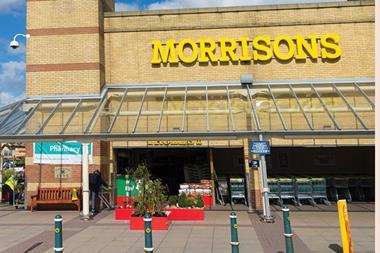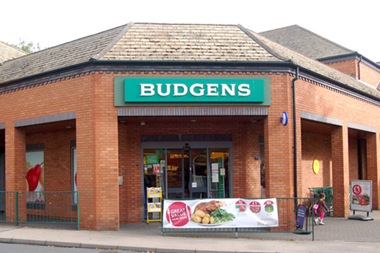A decade ago, Aldi was the 10th biggest food retailer in Britain. Now it has overtaken the Co-op to claim fifth place.

The growth of the German discounter shows how quickly the landscape can change for retail brands.
Aldi’s position as the fifth largest grocery chain actually underplays the impact that the company’s rise has had on the four biggest supermarket retailers - Tesco, Sainsbury’s, Asda and Morrisons - over the past decade.
The ‘big four’ have been forced to radically alter their strategies as consumer habits have evolved and the discounter has changed the rules of the game. They have been forced to shift their investment from a space race in out-of-town supermarkets to convenience stores, online shopping and lower prices.
It is still difficult to establish which companies are emerging as the winners and losers in this new era of retailing, despite the wave of statistics that is available.
Positive festive season
Take the Christmas trading updates that were published in January. Despite predictions that high-street chains would be hurt by the uncertainty caused by Brexit and a shift to online shopping, nearly all retailers claimed to have had a positive Christmas, with the exceptions including Next and New Look.
However, the state of the industry is murkier than the top-line stats suggest. I have spoken in this column before about the unreliability of like-for-like sales in judging the performance of a retailer. Not only do they give no clue about the profit margins earned by the company; they can also be manipulated depending on whether store extensions, promotions and online sales are included. There is no standard measure for like-for-like sales and therefore retailers include different factors.
Overly optimistic view
This Christmas, the notorious unreliability of like-for-like sales was even worse. Retailers measured their Christmas period between different dates, so it was difficult to compare performances. Tesco, for example, reported sales for the six weeks to 7 January while Sainsbury’s went for the 15 weeks to 7 January.

Also, all retailers enjoyed an extra day of trading in 2016 because it was a leap year and another extra day of trading in the run-up to Christmas because 25 December fell on a Sunday, when most shops open with shorter hours anyway, compared with a Friday in 2015. This means the Christmas trading updates gave an overly optimistic view of trading.
The curious case of retail statistics brings me back to the Co-op, a brand whose recent success has been lost between the market share data and the Christmas trading figures. Don’t be fooled by the fact that Aldi has overtaken the retailer in the latest set of market share figures or that the big four were so bullish about their Christmas - the Co-op is one of the best-performing retailers in the country.
Don’t be fooled by Aldi or the ‘big four’ - the Co-op is one of the best-performing retailers
The monthly market share updates from Kantar and Nielsen have become inevitably skewed towards the retailers opening the most stores (Aldi and Lidl) and against those closing shops (the Co-op). This issue could be ignored a decade ago when everyone was opening shops at a similar rate, but now there is a diverse collection of property strategies among the supermarket brands.
Aldi plans to open 70 shops this year while the Co-op announced in November that it was selling 36 shops to Hilco, the investment firm, as it continues to unwind the disastrous acquisition of Somerfield for £1.6bn in 2009.
Back on solid ground
As a result of this strategy, the Co-op has been losing market share for the past few years even though its underlying performance and the quality of its shops have been improving dramatically. The organisation has overhauled its own-brand food offering, lowered its prices so it is competitive with the big four and modernised its shops.
This is now starting to shine through in its financial performance with its like-for-like sales in food up 3.4% in the final quarter of 2016, a significantly stronger performance than Tesco, Sainbury’s, Asda or Morrisons were able to muster in any of the figures they reported.
The departure of Richard Pennycook as chief executive is a signal that the organisation is back on solid ground after the scandal that rocked its banking business and the slump in food sales. Steve Murrells has overseen the revamp in food as head of the retail business and is now replacing Pennycook as group chief executive.
Murrells is an impressive operator whose plans to attract more customers involve taking advantage of the fact it has more than four million members, a unique asset in the industry. The Co-op is attempting to attract more members through a loyalty scheme that offers a 5% reward for members when they buy own-brand products. More than 400,000 new members have signed up in the past four months alone.
Despite being overtaken by Aldi, the Co-op could cause as much trouble for the big four in 2017 as the German discounter, if not more.






























No comments yet